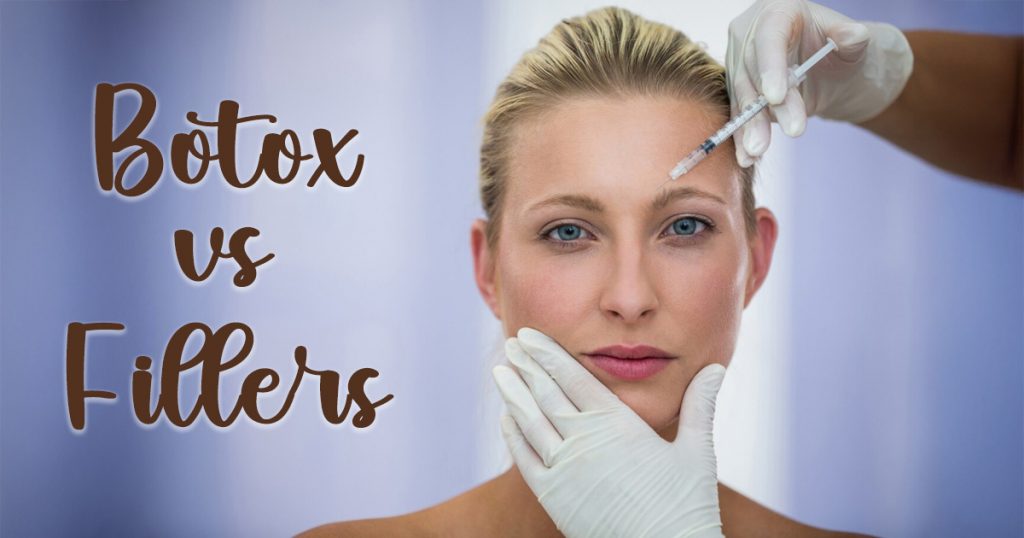Botox and dermal fillers are two common procedures for reducing wrinkles and symptoms of age. They are very popular, with over 9 million procedures done in 2015, according to the American Society of Plastic Surgeons (ASPS).While Botox and fillers are used for comparable cosmetic objectives, it’s vital to understand the differences before figuring out which one is best for you.
Getting to Know Botox and Fillers
Botox is a refined protein used to temporarily relax the muscles that create wrinkles. It is injected into the skin and inhibits nerve and muscle signals. This makes Botox suitable for treating dynamic wrinkles, which are caused by facial motions such as squinting or frowning.
Botox is most often used in areas like:
- Forehead lines
- Crow’s feet (lines around the eyes)
- Frown lines (lines between the eyebrows)
Dermal fillers, on the other hand, are chemicals injected beneath the skin to increase volume and smooth wrinkles. Unlike Botox, which targets muscles, fillers replenish lost volume. They’re used for static wrinkles, which are caused by aging or the loss of skin elasticity.
There are different types of dermal fillers, including:
- Hyaluronic acid-based fillers
- Calcium hydroxyapatite
- Poly-L-lactic acid
Dermal fillers are commonly used to treat:
- Nasolabial folds (lines from the nose to the corners of the mouth)
- Marionette lines (lines from the mouth to the chin)
- Cheeks (for volume restoration)
- Lips (for plumping)
Botox vs Filler: The Differences
Botox is not a filler. Yes, both can treat wrinkles, but they’re not the same thing. Here’s a clearer comparison of the difference between Botox and fillers:
Type
Botox is a neurotoxin, while fillers are soft tissue fillers.
Function
Botox relaxes muscles, reducing wrinkles, whereas fillers restore volume to drooping or thinning skin.
Wrinkle Type
Botox targets dynamic wrinkles (like frown lines or crow’s feet), while fillers target static wrinkles (such as smile lines or hollow cheeks).
Treatment Areas
Botox is usually utilized on the forehead, around the eyes, and between the brows, whereas fillers are used on the lips, cheeks, nasolabial folds, and beneath the eyes.
Duration
Botox lasts 3 to 6 months, while fillers last 6 months to over a year, depending on the type.
Side Effects
Botox generally has minimal side effects like bruising or slight swelling, while fillers may cause swelling, bruising, or lumps in some cases.
FDA Approval Year
Botox was approved by the FDA in 1989, while fillers started receiving FDA approval in 2006 and onward.
How Do Botox and Fillers Work Together?
Take note that fillers are not the same as botox. However, many doctors recommend combining Botox and dermal fillers for full facial rejuvenation. Botox reduces dynamic wrinkles by relaxing muscles whereas fillers add volume and soften static wrinkles. This combined approach can give a more youthful look by addressing different signs of aging at once.
Choosing Between Botox and Dermal Fillers
Deciding between Botox, dermal fillers, or both depends on your needs.It is critical to consult with a certified healthcare professional. They will evaluate your facial form, skin condition, and goals before recommending the best treatment option for you.
Factors to Consider:
- When considering treatment, think about your desired results. Do you want to reduce wrinkles caused by muscle movement, or are you looking to add volume to your face?
- Consider the treatment areas. Which specific areas of your face do you want to address?
- Budget is another important factor; Botox typically costs between $300 and $600 per session, while fillers can range from $600 to $1,000, depending on the type used.
- Consider the longevity of the findings. How frequently are you willing to receive treatments?
Enhancing Your Natural Beauty with the Right Choice
Choosing between Botox and fillers isn’t just about reducing wrinkles—it’s about enhancing your natural features and feeling confident in your skin. These treatments work best when customized to your specific needs, allowing you to attain a balanced and revitalized appearance. Working with a qualified professional ensures safe, effective results that suit your unique goals.
